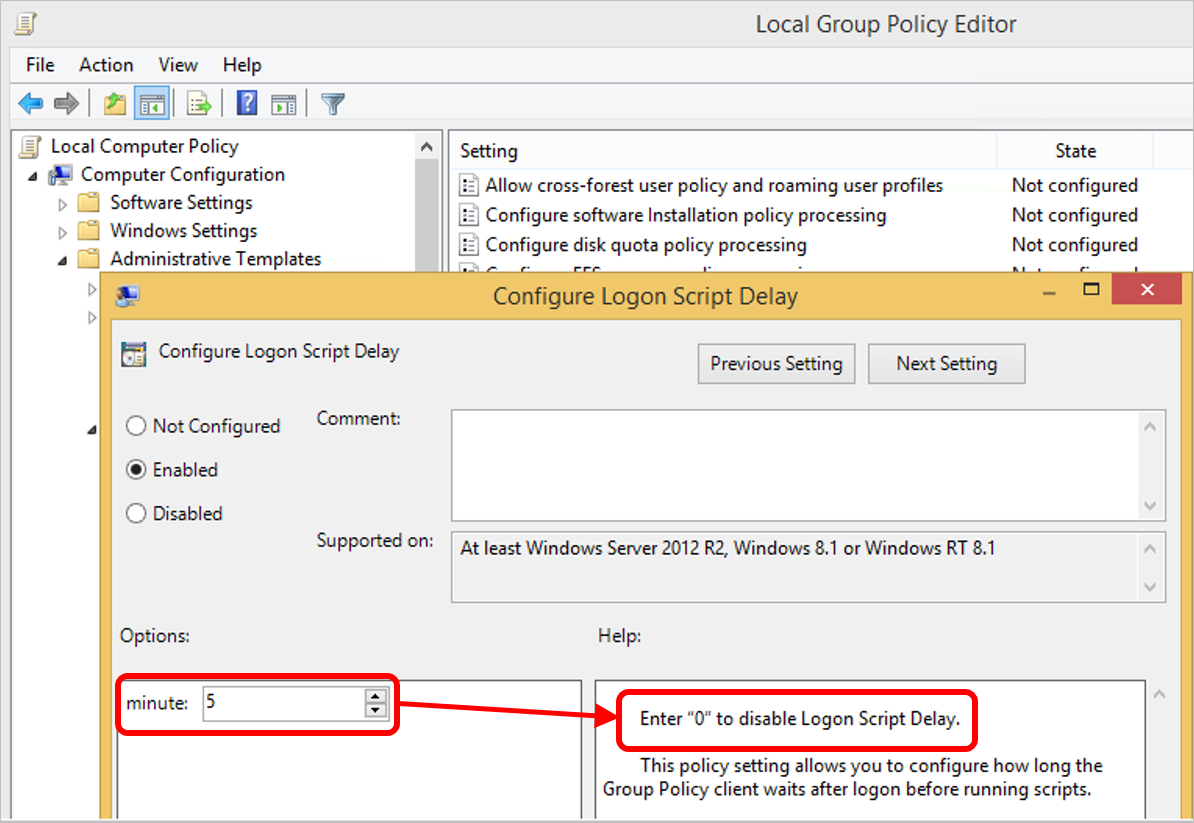

If you want to change the time that the Group Policy client waits until it runs the logon scripts, you should configure the Configure Logon Script Delay setting to Enabled in the Computer Configuration\Administrative Templates\System\Group Policy location.

If you want the logon scripts to run at user logon without any delay, you should configure the Configure Logon Script Delay setting to Disabled in the Computer Configuration\Administrative Templates\System\Group Policy location. The goal of the five-minute delay is to speed up the loading of the user's desktop on Windows 8.1-based computers. However, the default behavior of a Group Policy client is to wait five minutes before it runs logon scripts. The default value setting for the Configure Logon Script Delay policy is Not Configured. This script is stored in the following location:Ĭomputer Configuration\Administrative Templates\System\Group Policy This behavior occurs because Windows 8.1 includes a new Group Policy setting, Configure Logon Script Delay, that controls the behavior of logon scripts. Resources that are made available by the logon scripts may not be available to users on Windows 8.1-based computers until about five minutes after users log on.

Operations that are performed by the logon scripts may not be visible on Windows 8.1-based computers until five minutes after the user logs on. This behavior causes the following symptoms to occur: This article provides a solution to an issue where logon scripts don't run for five minutes after a user logs on to a Windows 8.1-based computer.Īpplies to: Windows 10 - all editions Original KB number: 2895815 SymptomsĪfter a user logs on to a Windows 8.1-based computer, the logon scripts do not run for five minutes. Logon scripts don't run for five minutes after a user logs on to a Windows 8.1-based computer


 0 kommentar(er)
0 kommentar(er)
